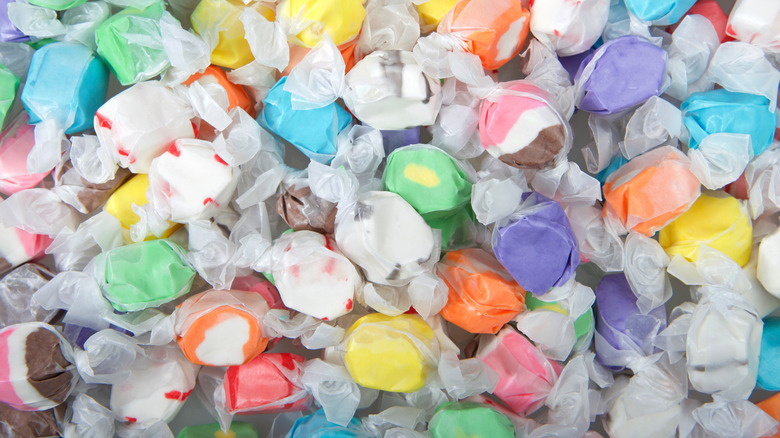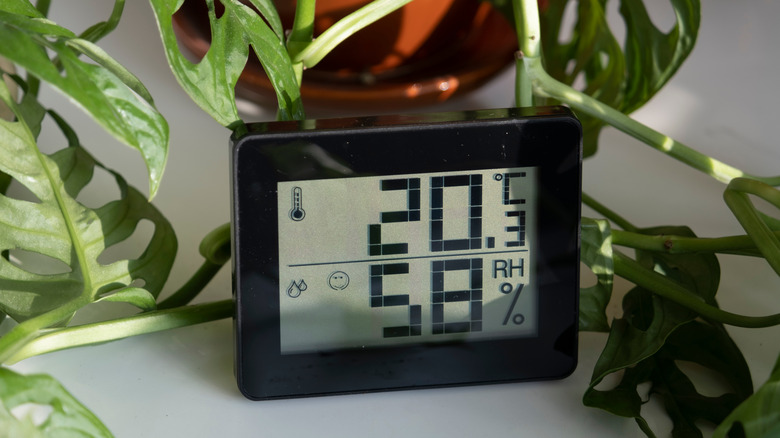Consider The Weather Before You Make Homemade Saltwater Taffy
Saltwater taffy is a sweet and chewy summer staple that is perfect to indulge in when the days get long and hot. While on a beach vacation, it's easy to spot the delicious wrappers in storefront windows while walking along ocean-side boardwalks. But if you don't see yourself taking a trip anytime soon, you don't have to resort to the low-quality, store-bought variety when a craving arises. Making saltwater taffy yourself can be a fun summer activity. However, you might want to prepare yourself before embarking on this candy-making endeavor, as there are several considerations to keep in mind.
From closely watching the temperature of your boiling syrup to learning how to correctly pull the taffy to achieve the perfect chew, making saltwater taffy takes practice — and even the weather plays a role in how your taffy will turn out. If you do happen to live in a humid area or are faced with non-stop summer thunderstorms, you might want to hold off on making taffy at home. Humidity in the air can seriously affect the outcome of your taffy's texture, and after so much effort to make something homemade, it can be quite a frustrating obstacle.
Glance at your trusted weather app before starting
While saltwater candy factories can go to great lengths to achieve the perfect indoor humidity, temperature, and other factors, you will likely have a harder time controlling the elements inside your own home. However, by simply taking note of the humidity in your area, you'll be doing yourself a huge favor before getting started.
If there's a lot of moisture in the air while the taffy is being made, the candy may fail to properly harden. Instead, it will remain too soft and won't achieve the desired chew that makes saltwater taffy famous. Specifically, moisture in the air interferes with the step in the process known as the soft-crack phase. This is the time at which the moisture has mostly cooked out of the candy, and it has taken on a flexible texture after reaching between 270 and 290 degrees Fahrenheit.
All you have to do to make sure your taffy achieves an ideal texture is to wait for a hot, dry day to make it. While other parts of the saltwater taffy-making process can be a bit overwhelming, checking your hygrometer is likely the easiest step in the process.

